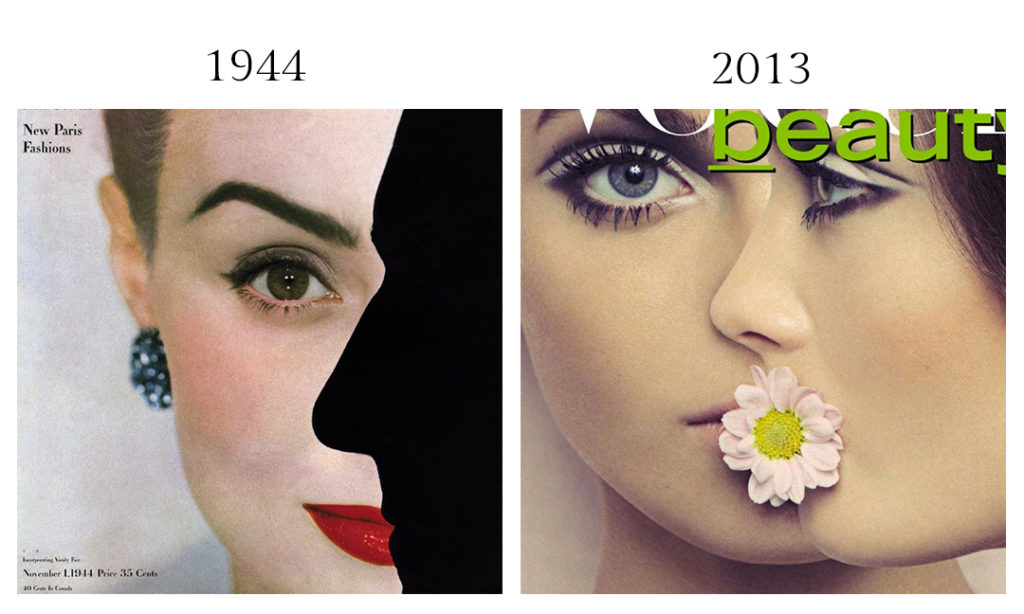
Two-Faced
German photographer Erwin Blumenfeld’s Dada background is evident in his collage-like images and photographic manipulations. For the cover of Vogue’s November 1, 1944 issue, Blumenfeld aimed to represent the void in the 1940s woman’s life, created by her husband off at war. The photographer placed a profile of a male silhouette directly on top of the cover girl
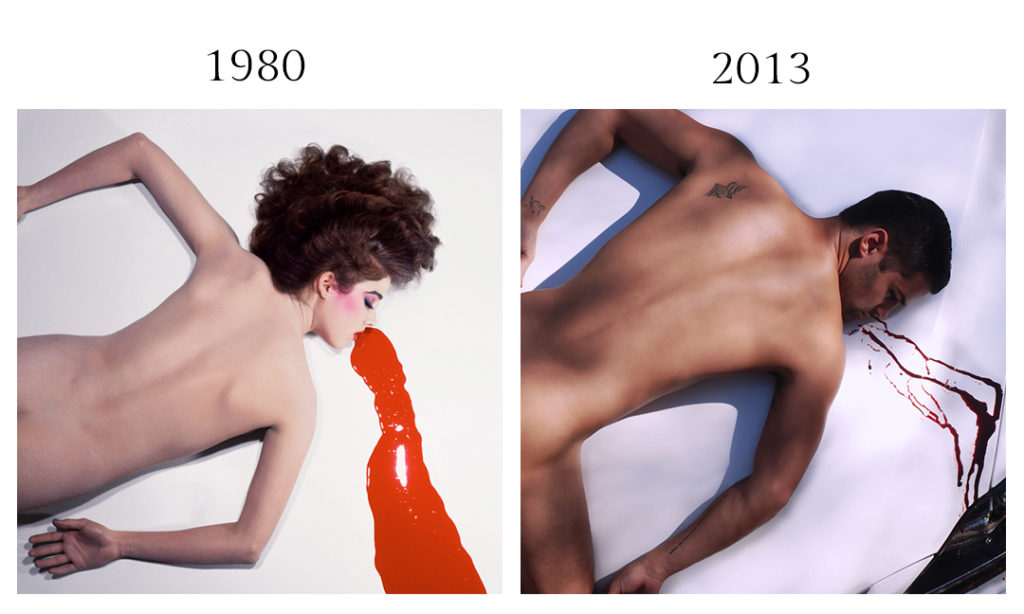
New Blood
Guy Bourdin’s borderline morbid images are thought to be the result of the photographer’s childhood, abandoned by his mother at a young age, coupled with a string of relationships with suicidal women, his wife is thought to have committed suicide, one girlfriend hung herself and another attempted with slashed wrists. Nonetheless, Bourdin’s provocative
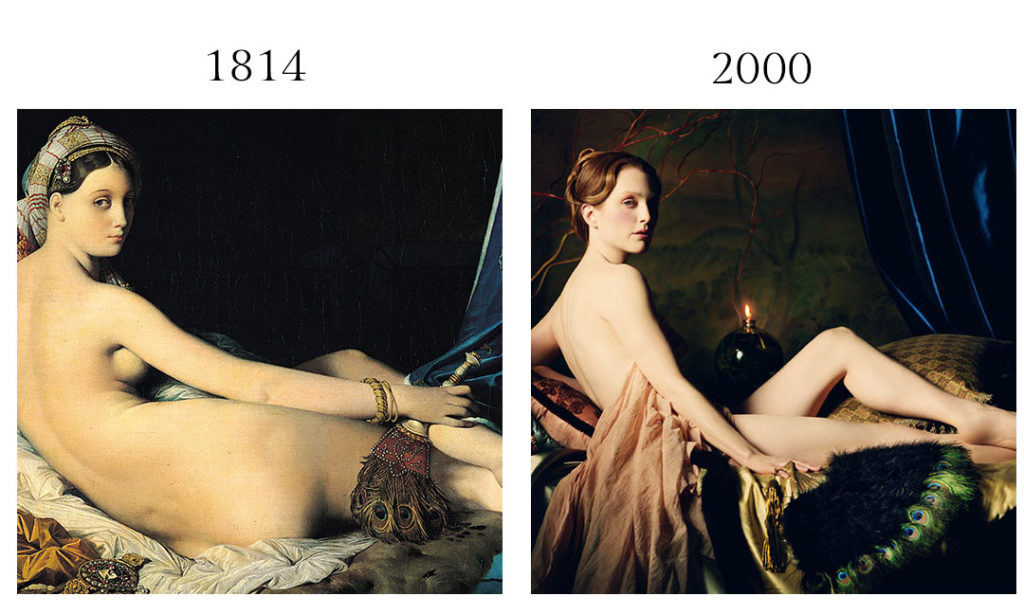
Less is Moore
Rather than paint the mythological nude, Neoclassical painter Ingres depicted the exotic nude in his 1813 painting, La Grande Odalisque. Commissioned by Napoleon’s sister and the queen of Naples, Caroline Murat, the famous nude depicted an odalisque or concubine amongst rich, exotic textiles and accessories such as the turban and peacock fan which were meant to evoke the
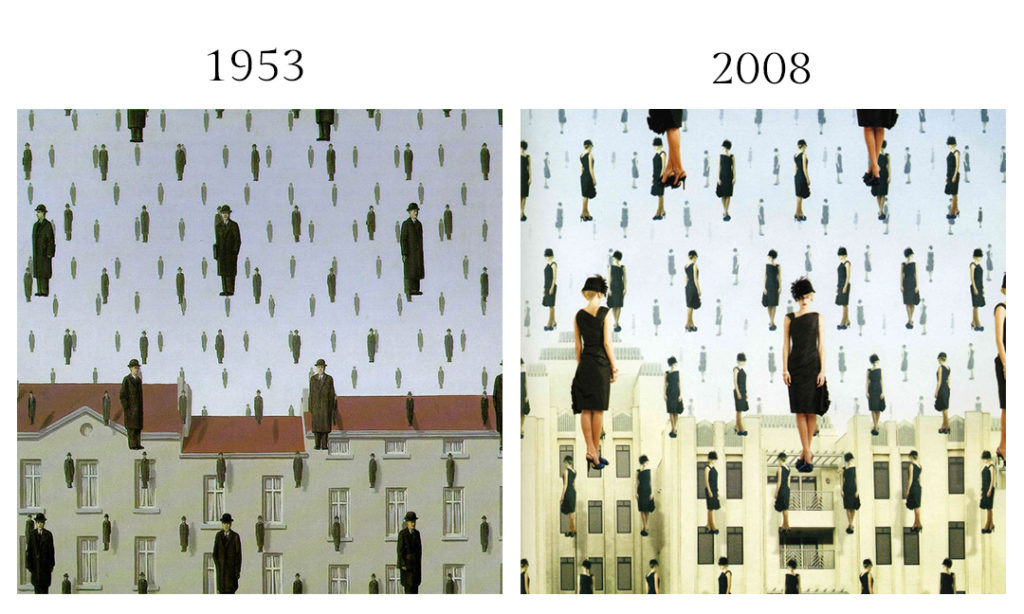
Sir Realist
Belgian artist René Magritte toyed with perspective and reality, creating surreal works through real, ordinary settings and mundane objects. In his 1953 painting Golconda, Magritte replicated and multiplied male figures suspended midair likening them to raindrops and exploring ideas of the tension between individuality and group identification. Paying homage to Magritte, photographer Andrew Matusik shot a Magritte-themed editorial for Genlux Magazine’s
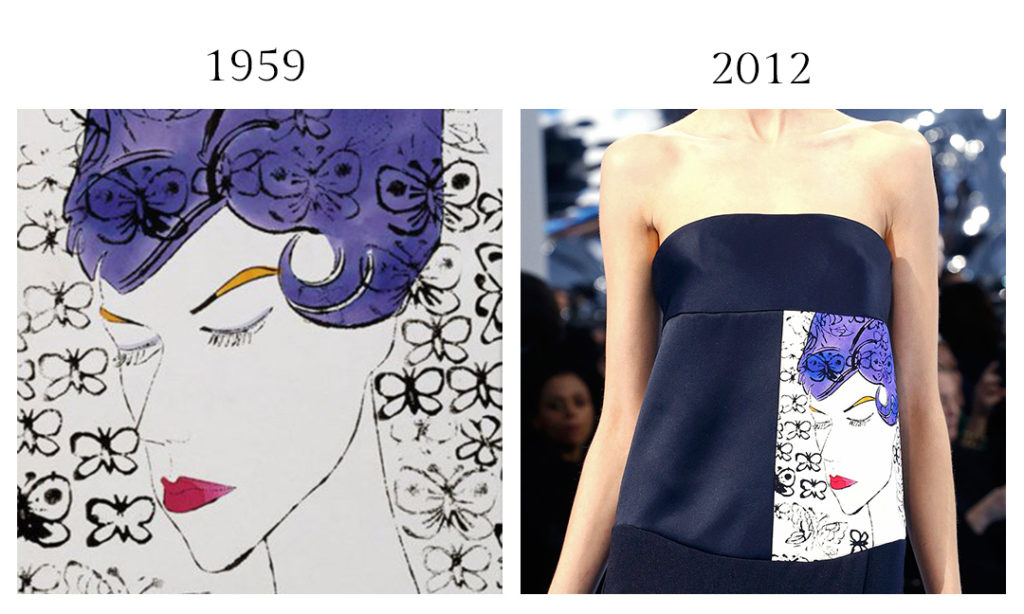
Shop Artist
Before establishing himself as a famed pop artist, Andy Warhol would find work as a successful commercial artist for clients including Glamour, Harper’s Bazaar, NBC, Tiffany & Co. and Vogue. On the eve of the 1960s, which saw the production of many of Warhol’s most well known works, Warhol created Female Head with Stamps in 1959. For
